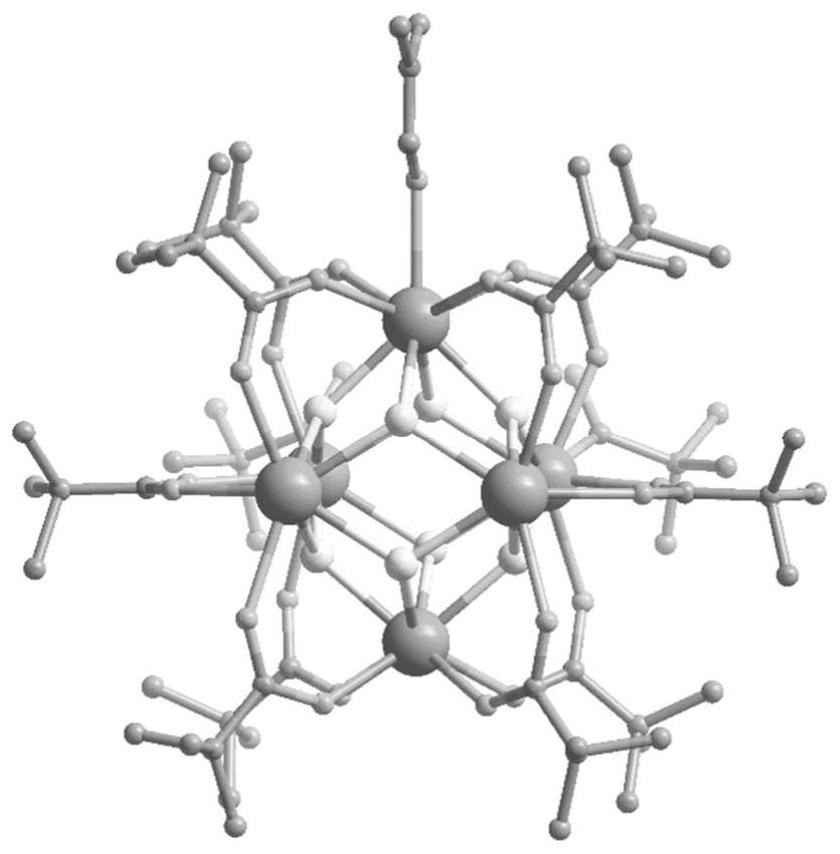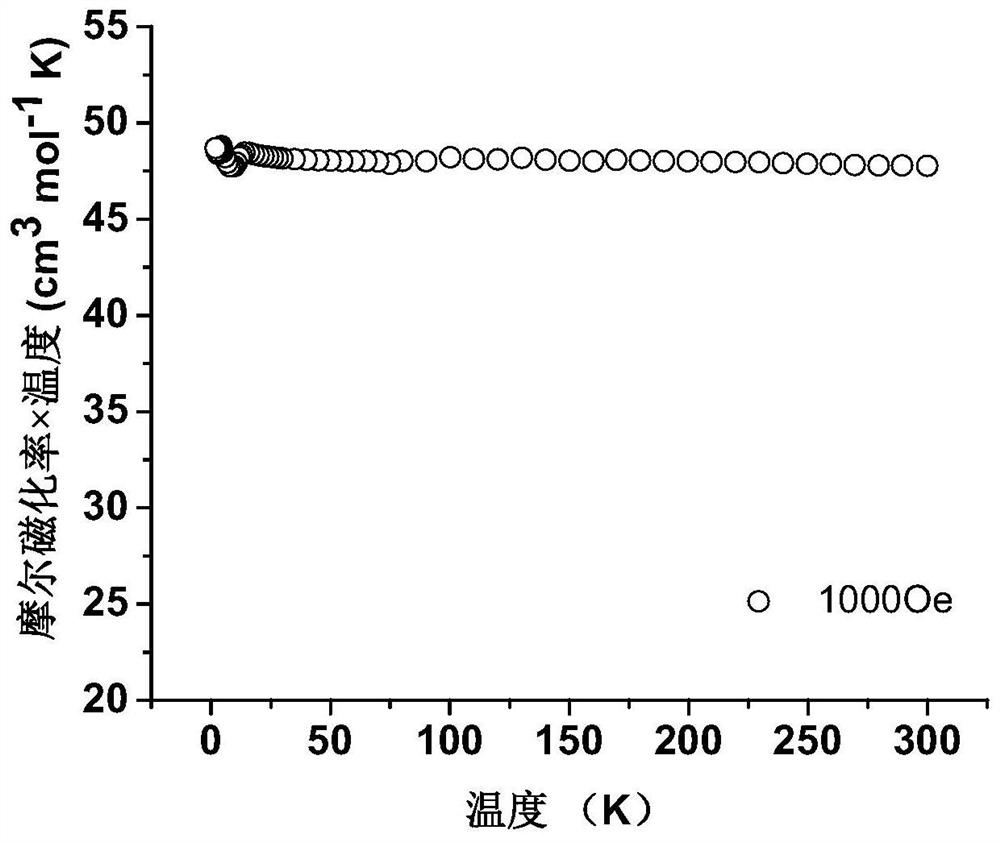Fluorine-bridged rare earth molecular cluster magnetic refrigeration material and preparation method thereof
A magnetic refrigeration material and molecular cluster technology, applied in the field of material science, can solve the problems of poor magnetic refrigeration performance and achieve good thermal stability, high yield and good effect
- Summary
- Abstract
- Description
- Claims
- Application Information
AI Technical Summary
Problems solved by technology
Method used
Image
Examples
preparation example Construction
[0036] A preparation method of a fluorine-bridged rare earth molecular cluster magnetic refrigeration material, comprising the following steps:
[0037] Step 1), uniformly dispersing the rare earth metal source in an organic solvent, and then adding a fluorine source to the organic solvent dispersed with the rare earth metal to obtain a reaction system A;
[0038] In step 2), the reaction system A is thermally reacted under organic solvent thermal conditions, and the supernatant of the thermally reacted reaction system A is filtered, crystallized at low temperature, and washed to obtain a fluorine-bridged rare earth molecular cluster magnetic refrigeration material. Specifically, the reaction system A is thermally reacted at a temperature of 80-160°C for 24-72 hours, and then the reaction system A after the thermal reaction is filtered with the supernatant, crystallized at low temperature, and washed to obtain the fluorine-containing bridge. Rare earth molecular cluster magnet...
Embodiment 1
[0044] 0.75g gadolinium pivalate (Gd(piv) 3 (Hpiv) 3 ) and 0.074g ammonium fluoride (NH 4 F) Add 8 ml of N,N-dimethylformamide (DMF), stir for 10 minutes to make it fully mixed to obtain a mixture; transfer the mixture to a polytetrafluoroethylene-lined stainless steel reactor, and place the reactor at 80 In an oven at ℃, heat and react for 72 hours under the pressure naturally generated by the reactor;
[0045] After the reaction is completed, the reaction kettle is naturally lowered to room temperature, the supernatant in the kettle is taken out, filtered, and placed in a minus 40 degree environment for cooling and crystallization for 24 hours, and finally pure colorless Gd 6 f 8 (piv) 10 (Hpiv) 4 The DMF crystal was washed three times with cold DMF, and the crystal yield was greater than 70% (calculated based on Gd). The crystal contained a new zero-dimensional structure, and the crystal structure was determined by single crystal X-ray diffraction analysis.
[0046] s...
Embodiment 2
[0050] 0.185g gadolinium pivalate (Gd(piv) 3 (Hpiv) 3 ) and 0.037g ammonium fluoride (NH 4 F) Add to 2 ml of methanol and stir for 10 minutes. Transfer the mixture into a polytetrafluoroethylene-lined stainless steel reaction kettle, place the reaction kettle in an oven at 160°C, and heat and react for 24 hours under the pressure naturally generated by the reaction kettle;
[0051] After the reaction is completed, the reaction kettle is naturally lowered to room temperature, the supernatant in the kettle is taken out, filtered, and placed at minus 40 degrees for cooling and crystallization for 24 hours, and finally pure light purple Gd is obtained. 6 f 8 (piv) 10 (Hpiv) 4 DMF crystals, washed three times with cold DMF, the crystal yield was greater than 30% (calculated based on Gd), and the crystal structure was determined by single crystal X-ray diffraction analysis, which was consistent with the previous Gd 6 f 8 (piv) 10 (Hpiv) 4 The crystal structure of DMF is con...
PUM
 Login to View More
Login to View More Abstract
Description
Claims
Application Information
 Login to View More
Login to View More - R&D
- Intellectual Property
- Life Sciences
- Materials
- Tech Scout
- Unparalleled Data Quality
- Higher Quality Content
- 60% Fewer Hallucinations
Browse by: Latest US Patents, China's latest patents, Technical Efficacy Thesaurus, Application Domain, Technology Topic, Popular Technical Reports.
© 2025 PatSnap. All rights reserved.Legal|Privacy policy|Modern Slavery Act Transparency Statement|Sitemap|About US| Contact US: help@patsnap.com



